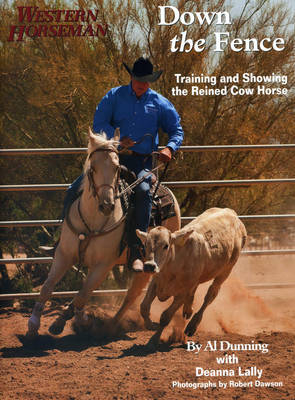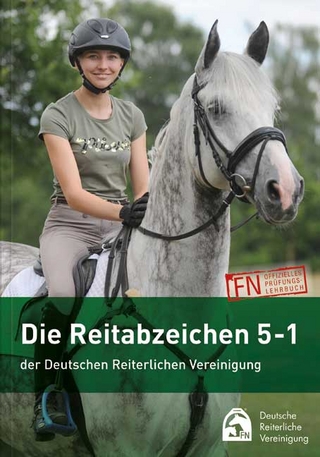
Down the Fence
Globe Pequot Press (Verlag)
978-1-4930-0174-3 (ISBN)
- Titel ist leider vergriffen;
keine Neuauflage - Artikel merken
Among them are Bob Avila, Brad Barkemeyer, Corey Cushing, Todd Bergen, Todd Crawford, Bill Enk, Bobby Ingersoll, Don Murphy and Doug Williamson.
Al Dunning, a multiple world champion, has been a lifelong competitor in the American Quarter Horse, National Cutting Horse, National Reining Horse and National Reined Cow Horse Associations. His many championships speak well of his horsemanship expertise, just as the many competitive awards his riding students have earned are testament to Al's abilities as an instructor and coach. Recognized by his peers as one of the country's top professional trainers, Dunning owns and operates Almosta Ranch and AD Tack, both headquartered in Scottsdale, Arizona. Dunning is a proven Western Horseman author, with past titles including Reining and The Art of Hackamore Training to his credit.
I. What working cow horse is A. History 1. Ranch work 2. Utilitarian value 3. Tradition 4. Transition to modern era a. Evolution from ranch horse to show horse b. Early days of competition B. Contemporary cow-horse work 1. Competitive sport a. National Reined Cow Horse Association stats and facts b. American Quarter Horse Association stats and facts 2. Showing a. Dry work, evolution of style b. Fence work c. Herd work d. Futurities, derbies and other divisions II. What it takes A. Horse attributes 1. Physical attributes a. Conformation i. Movement and carriage ii. Speed and agility iii. Natural athleticism iv. Assessing traits in the prospect 2. Mental attributes a. Attentiveness and obedience i. "Power-on" switch ii. "Power-off" switch b. Cow sense 3. Training attributes a. Speed control and rate b. Form c. Acceptance of rein contact and yielding to rider B. Rider attributes 1. Physical attributes a. Athleticism b. Quick reflexes 2. Mental attributes a. Bravery b. Clarity and focus 3. Dedication a. Development of cow sense, i.e. reading cattle b. Feel c. Practice d. Learning from mistakes III. Equipment A. Starting and progression 1. Bits 2. Hackamores 3. Two-rein 4. Bridle B. Romals vs split reins C. Browband headstall vs split-ear D. Saddles E. Protective gear IV. Reined work vs. reining A. Understanding the dry work 1. Maneuvers 2. Patterns 3. Scoring B. NRHA reining 1. Maneuvers 2. Patterns 3. Scoring C. Differences, reined work and NRHA reining 1. How the styles differ and why a. Headset b. Need for shorter, harder stop c. Need for contact d. Mental aspects of the horse and training i. NRHA reining horse, no decisions for himself ii. Cow horse reads, reacts to cattle, but rider the authority V. Bloodlines A. Exemplary stallions, mares and geldings B. Trainer commentary from other pros VI. Beginning cattle work A. Round pen work 1. Shoulder control 2. Steering 3. Accepting the pull B. Mechanical cow training 1. Basics 2. Developing resistance-free horse 3. Integration of reined work VII. Initial Fence Work A. Training basics 1. Form a. Collection b. Straightness c. Hip control 2. Instilling rate and drills 3. Developing a stop and drills 4. Turning a. 270-degree turn b. Other drills B. Cow Work 1. Learning to hook a cow 2. Teaching horse to follow a cow C. Training Tips 1. Making mistakes 2. Instilling calmness 3. Additional concepts from trainers VIII. Advanced Fence Work A. Boxing the cow 1. The object 2. The approach 3. Evaluating the cow 4. Getting the cow's attention 5. Hooking up 6. The set-up to go down the fence B. Down the Fence 1. Position leaving end of arena 2. Lap and tap 3. Rate 4. Reading the cow C. Running 1. The objective 2. Understanding the markers 3. Rate and control 4. Safety D. First Turn 1. Form 2. Position 3. Importance of first turn 4. The loop 5. Understanding the arena 6. Regaining position E. Second Turn 1. Position 2. Handling your horse 3. Setting up to circle F. Switching fences G. Open-field turns H. Circling the cow 1. Position 2. Form 3. Control 4. When and how to switch sides IX. Trouble-Shooting A. Not ready for the fence B. Not enough stop C. The revved-up horse D. "Chargey" in the corner E. Position 1. Close to cow 2.Spooky, bowed out F. Running, no rate G. Dropping/shouldering into cow down the fence H. Reining hard into fence turn I. Hanging up J. Shoulder in, head out when circling K. Not pulling off the cow X. Showing A. What makes good reined work? B. What makes good herd work? C. What makes a good fence run? D. Preparation 1. Fitness 2. Responsiveness E. Luck of the draw F. Quick decisions 1. Boxing 2. Looping 3. Additional fence turns 4. Circling XI. Judging A. Understanding the score card 1. Components a. Check plus b. Check minus c. Double plus 2. Self-critique B. At the end of the day 1. Attitude 2. Sportsmanship 3. Learning from experience 4. Modifying training for improvement XII. In Closing-The Final Philosophy A. Do your homework 1. Understand the sport 2. Know your capabilities B. Practicing perfect 1. Never sacrifice form 2. Maintain quality maneuvers 3. Maintain control C. Bravery D. Keeping things fun Front ancillary: 7 pages [title page, pub page, dedication and acknowledgments page, TOC, third- party foreword page, Al's preface page, Deanna's intro page] Chapter count: 12 Back ancillary: 5 pages [two pages Al profile, one page Robert Dawson profile, one page Deanna Lally profile, one page WH book list]
| Erscheint lt. Verlag | 7.6.2015 |
|---|---|
| Verlagsort | Old Saybrook |
| Sprache | englisch |
| Maße | 205 x 273 mm |
| Gewicht | 29 g |
| Themenwelt | Sachbuch/Ratgeber ► Sport ► Reiten / Pferde |
| ISBN-10 | 1-4930-0174-4 / 1493001744 |
| ISBN-13 | 978-1-4930-0174-3 / 9781493001743 |
| Zustand | Neuware |
| Haben Sie eine Frage zum Produkt? |
aus dem Bereich


